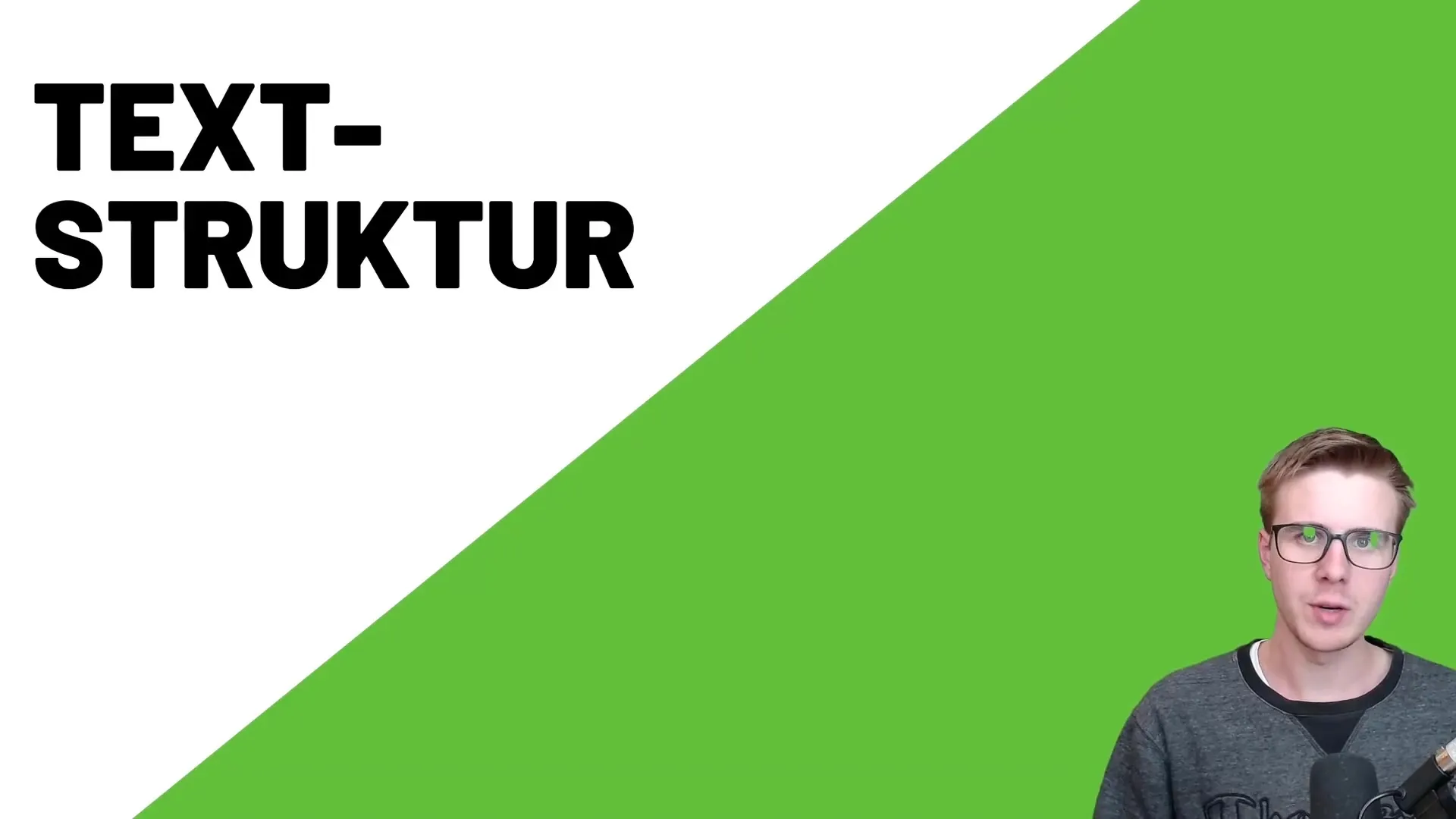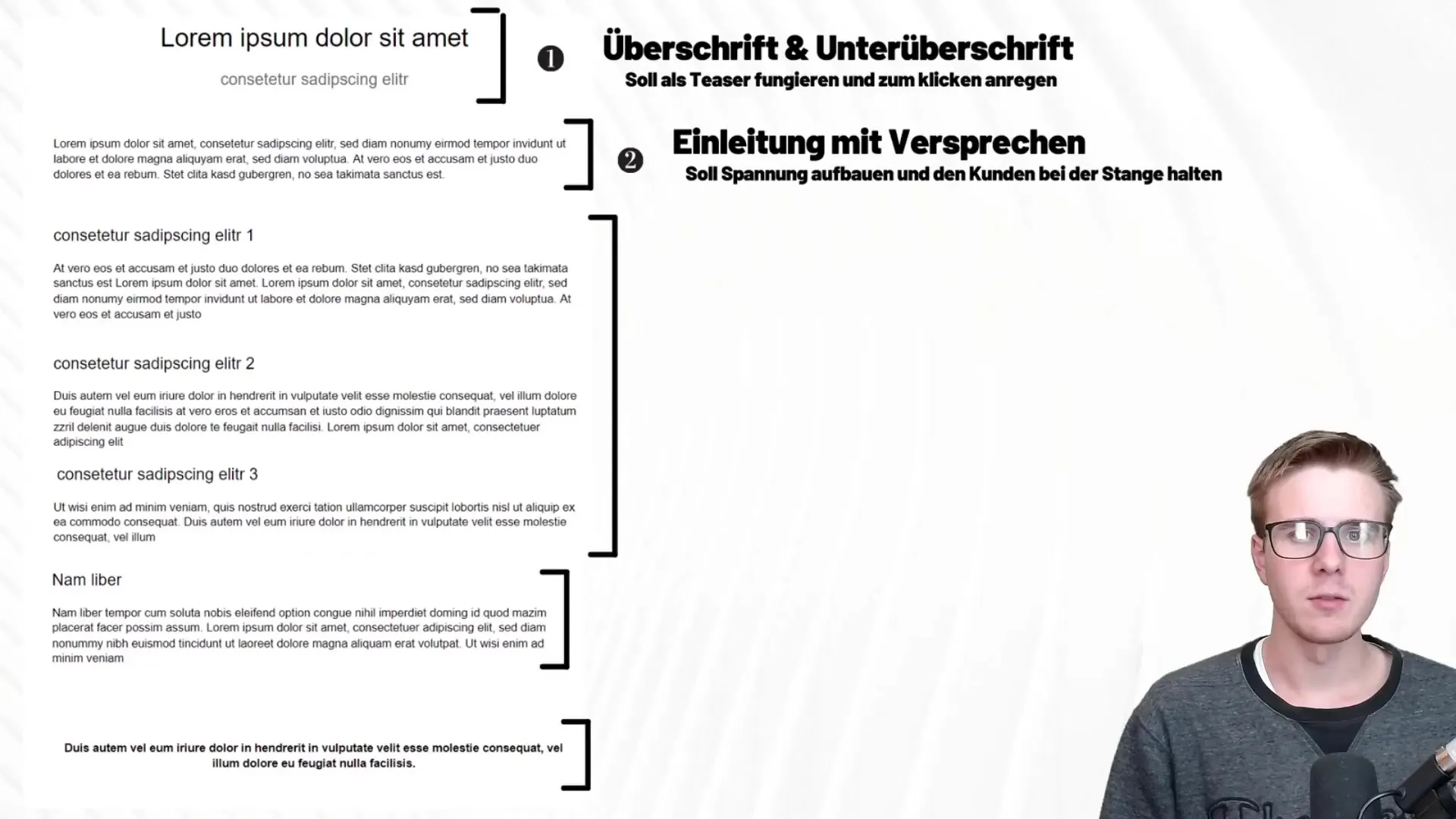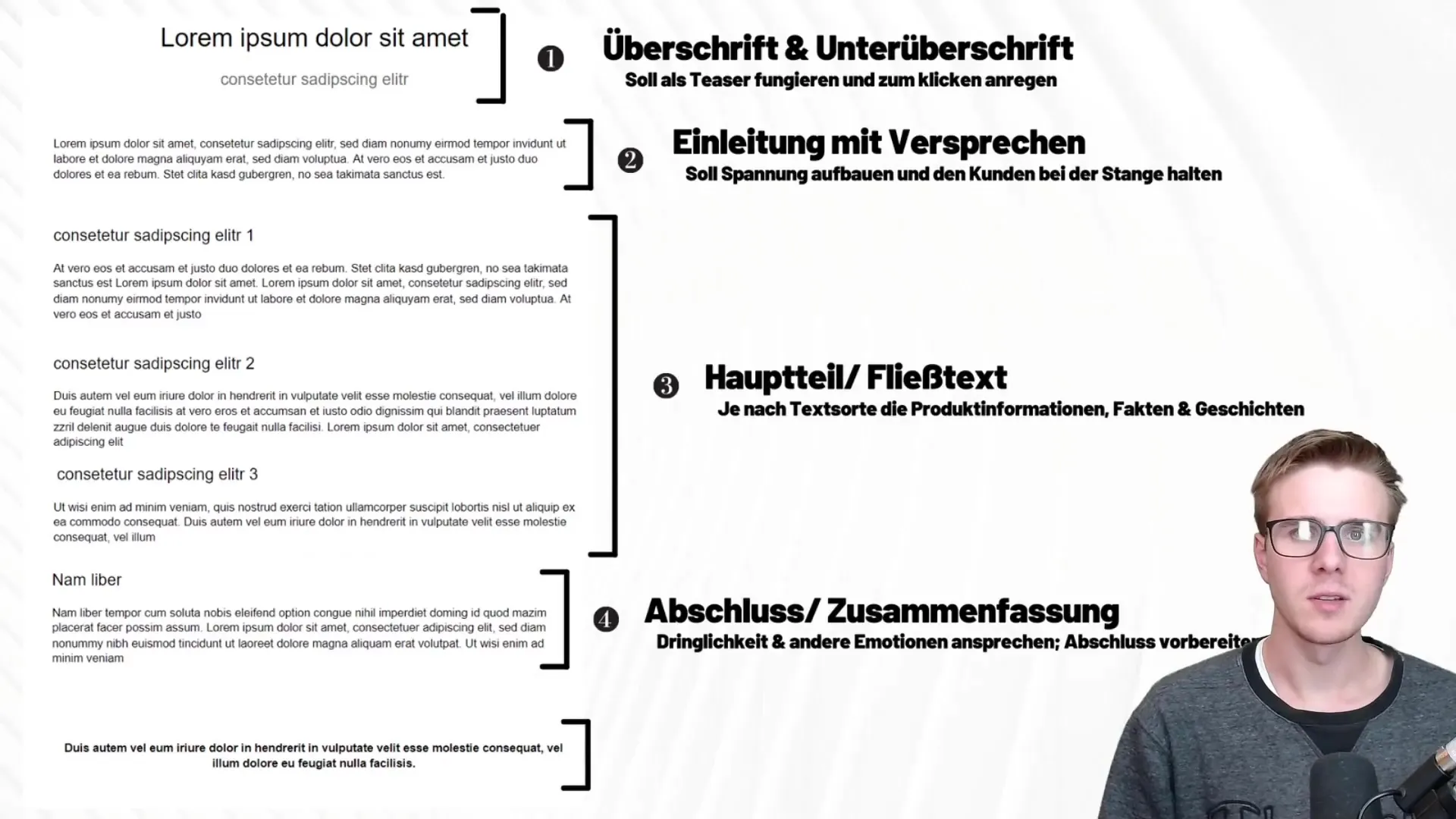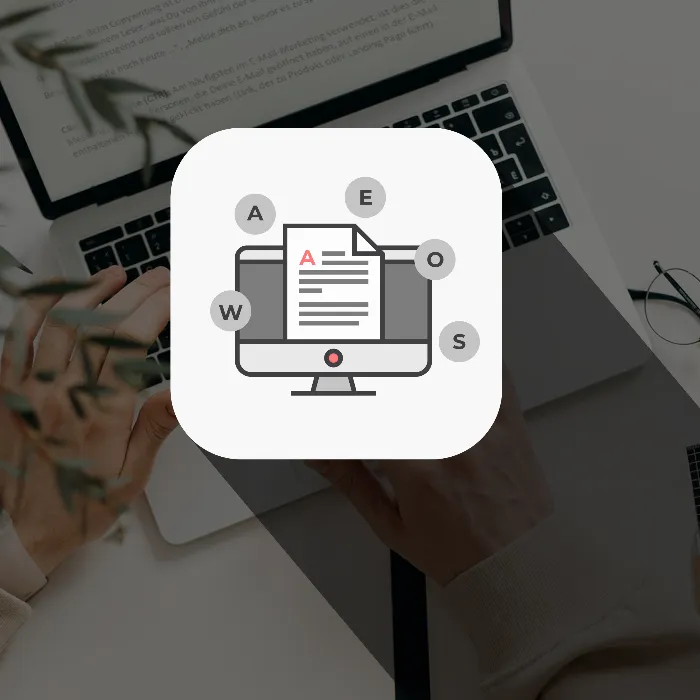Success in copywriting largely depends on a clear and well-thought-out text structure. Often, readers decide within seconds whether to stay or click away. Therefore, the structured layout of a text plays a crucial role in capturing the readers' attention and engaging them in the content. In this guide, you will learn about the basic elements of an effective text structure that will help you attract more readers and convert them into potential customers.
Key Insights
- The headline is the crucial teaser that encourages clicking.
- A promising introduction can captivate readers and encourage them to keep reading.
- The main body provides space for facts, stories, and information that should be well-structured.
- The conclusion summarizes the content and leads to a clear call to action.
Step-by-Step Guide
1. The Headline
The first step to successful writing is the headline. It should be formulated in a way that immediately invites clicking. Use important keywords and create an enticing teaser. A good headline could be, for example: "How I became a millionaire in 7 years - and how you can too." This type of title arouses curiosity and gives an outlook on the content of the text.

2. The Introduction
After the headline comes the introduction, which is crucial for keeping the reader in the text. It should contain a promise strong enough to pique interest. Therein, you describe what the reader can expect in the following text and offer a clear customer benefit. For example: "If you want to know how to earn 500€ in just 30 days, keep reading." It is important to build suspense and increase the reader's interest.

3. The Main Body
The main body of your text is the core content. Here, the reader receives the information they need: whether through product descriptions, data, or narrative elements like stories. Divide this section into smaller sections with headings or bullet points. This makes it easier for the reader to find the information they are looking for. Again, use relevant and interesting content to keep the readers engaged.
4. The Conclusion
In the conclusion, you summarize the key points once again and emphasize urgency. Why should the reader act now? Here you can appeal to the reader's emotions and address them directly. For example: "You have now learned everything about making money. If you seriously want to become a millionaire, consider the next product." Here, the connection between the previous information and the call to action is established.

5. The Call to Action
The Call to Action (CTA) is the decisive final step. It prompts the reader to take a specific action, such as purchasing a product, subscribing to a newsletter, or clicking on a video. Make this area visually appealing and use clear, action-oriented language. The CTA should be easy to understand and convincing, for example: "Click here to learn more!"
Summary
A well-thought-out text structure is crucial for the success of your copywriting. With a strong headline, a captivating introduction, an informative main body, a clear conclusion, and a convincing call to action, you can ensure that your message is not only heard but also understood and put into action.
Frequently Asked Questions
What is the most important part of a copywriting text?The headline is crucial as it arouses the reader's interest.
How do you formulate a good introduction?A good introduction contains a strong promise and is designed to build suspense.
How should the main body be structured?The main body should be divided into smaller sections or bullet points to make information easily accessible.
What makes an effective call to action?An effective CTA is clear, action-oriented, and visually appealing.
How can I address emotions in the conclusion?By emphasizing the benefits of what was read and presenting the reader's actions as urgent.


